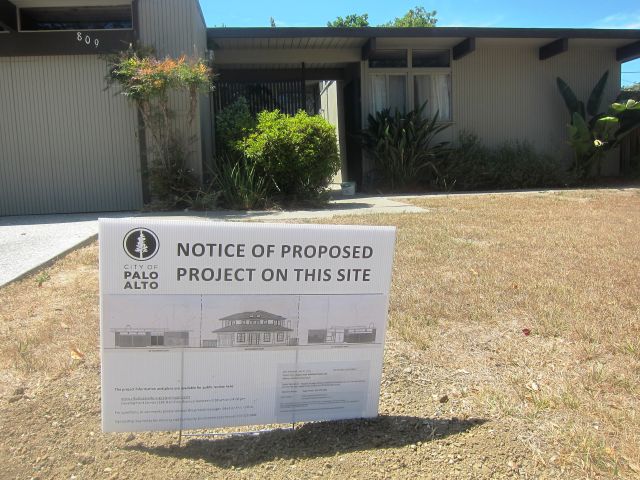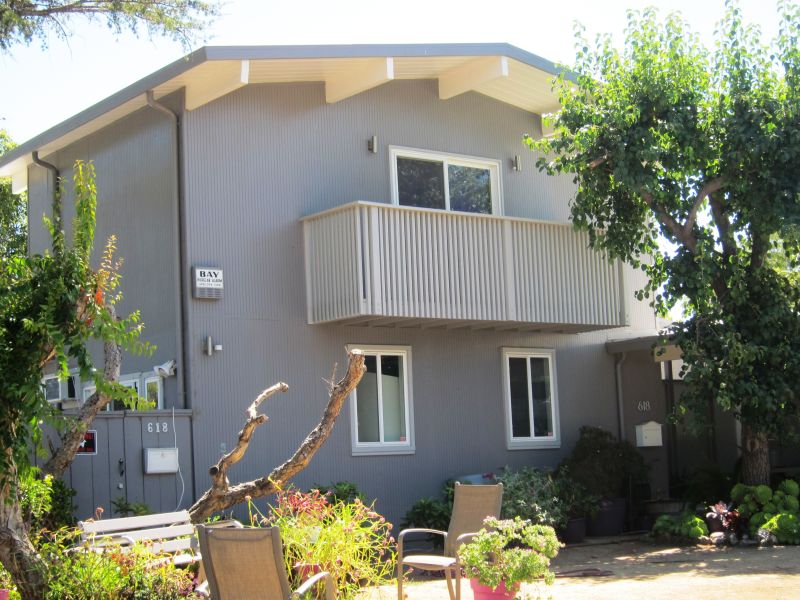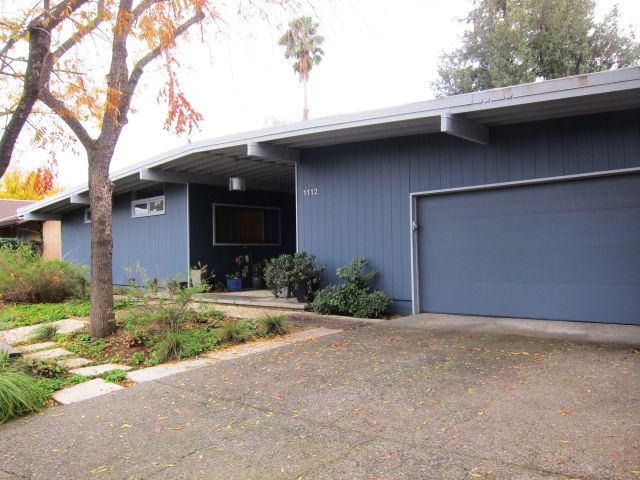
Saving Modern Homes: a Statewide Wave
 |
|
|
What began a few years ago on a few quiet residential streets in Palo Alto has become a statewide, perhaps even a nationwide, phenomenon – people uniting to save their mid-century modern homes.
We’re seeing it in the Bay Area – in Palo Alto, Sunnyvale, Cupertino, Santa Clara, Los Altos – and down south, in the city of Orange.
We’re seeing it in Davis in California’s great Central Valley. We’re even seeing it in the suburbs of Denver. Maybe one day soon it will happen in your neighborhood.
Neighbors are coming together to preserve their homes, and the looks and quality of life of their neighborhoods, as they fight two-story monstrosities and teardowns. They are fighting for and often winning historic designation, single-story protections, stronger design guidelines, and more.
Over the years we have followed this trend, often on a city-by-city, or neighborhood-by-neighborhood basis. Recently, though, moves to protect neighborhoods, and sometimes stumbling blocks and opposition, have become so common it has become hard to stay abreast.
Time for a recap, no?
 |
|
|
Palo Alto is where the recent efforts at neighborhood preservation began, back in 2014 when a proposal to demolish an Eichler home across from the Eichler Swim and Tennis Club and replace it with a two-story out-of-character home (the proposal has since become fact) set off the current round of teardown battles.
That’s not to say there have never been such battles before. In fact several cities in the Bay Area had long before established zoning rules and/or design guidelines to preserve Eichler homes, including Palo Alto and Marin County.
Today in Palo Alto, city planners are developing 'Eichler Neighborhood Design Guidelines,' and holding community meetings to gather input.
This came about after several Eichler neighborhoods in the city -- where battles over too much development hurting neighborhood integrity have led to the formation of an important political bloc, the 'Residentialists' -- applied for and were granted single-story zoning protection.
But two applications were rejected in 2016, and some people thought new, more rational procedures were needed for evaluating applications – and for determining whether neighborhood support was sufficient in each case.
The city is considering several improvements, including:
A possible 'Eichler Overlay Zone' for some or even all Eichlers in town.
Changing how 'votes' of homeowners are counted when neighbors apply for zoning overlay zones.
Developing improved guidelines for Eichler homes and homes in Eichler neighborhoods.
The city hired the esteemed architecture firm Page & Turnbull to aid in “developing an understanding of the different Eichler neighborhoods, outreach to residents and owners about these neighborhoods and future redevelopment, and to establish guidelines and a review process to evaluate future new home construction.”
The city document goes on: “The scope for Page & Turnbull also includes assisting the City of Palo Alto implement related changes to the Individual Review guidelines and/or zoning code.”
 |
|
|
Sunnyvale, after Palo Alto, has seen the most movement towards preservation, here through 'single-story combining districts,' which, like single-story overlays in Palo Alto, protect tracts from second-story additions and two-story homes.
In Sunnyvale several mini-neighborhoods have won such protection. They are 'mini' because the cost of applying and the difficulty of winning support from and getting funding from people the organizers don’t know, has prevented people from organizing larger areas.
Some people, including a majority of the Planning Commission, have argued against such zones, in part because, they say, they would hurt the city’s ability to provide more housing for a growing tech workforce.
But the City Council, whose will prevails, has favored the changes, no doubt because many voters do too.
The council had considered taking a broader look at the Eichler problem last year by reviewing and possibly revamping its process for handing out overlay zone protection. But Steve Meier, an Eichler owner and preservationist, notes that the city did not make this a priority this year.
Cupertino too is getting into the overlay act. The City Council is moving towards allowing neighbors to petition for such protective zoning. While the city already has a few overlay zones, it does not have a formal procedure for these zones to be instigated by residents.
As is being discussed, the procedure would involve a petition and would require that two-thirds of the owners support the zoning change. Voting would be by mail. The Planning Commission approved the matter in March, and the council passed an ordinance in April .
The city already has one Eichler district, along with guidelines for remodels and new homes there.
 |
|
|
In Santa Clara, where homes built by Mackay Homes in the 1950s are endangered, owners have tried a variety of methods to preserve them, including seeking protection from a citywide historic preservation ordinance, and looking into reviving old tract CC&Rs (covenants, conditions and restrictions) that govern the appearance of homes.
In Los Altos, an effort to create a historic district for the 37-home Fallen Leaf Park tract has recently collapsed – at least for now. Proponents had won much support for a district, which would provide more protection that single-story zoning. It would have preserved front facades and detailing, as well as controlling house size.
But opponents, who were afraid that design guidelines would prevent them from changing their facades, later won backing from neighbors. The leaders of the effort dropped the plan as neighborhood tensions mounted. But they say one day they may bring it back.
A consultant surveyed the neighborhood and prepared the historic district application, so proponents have the necessary documents. They also prepared draft design guidelines that would have been enforced by the city.
 |
|
|
Another effort to create a historic district in the college town of Davis is just getting underway, under the guidance of architect and homeowner Allen Lowry. This would cover University Estates, a neighborhood developed by the Streng Brothers.
Finally, in the city of Orange in Orange County, three Eichler tracts are moving towards becoming both national and local historic districts. Kelly Laule, a real estate broker, has been working on this plan for years. She plans to submit a National Register application soon.
The city meanwhile is designing standards for remodeling and other changes to homes in the three subdivisions – Fairhills, Fairmeadow and Fairhaven.
On a national note, the 176 Eichler copycat homes of Krisana Park near Denver won protection against two-story neighbors and conversions – with 90 percent of neighbors backing the plan.
Other efforts to preserve modern communities are undoubtedly underway. If you are part of one, let us know.
- ‹ previous
- 508 of 677
- next ›



